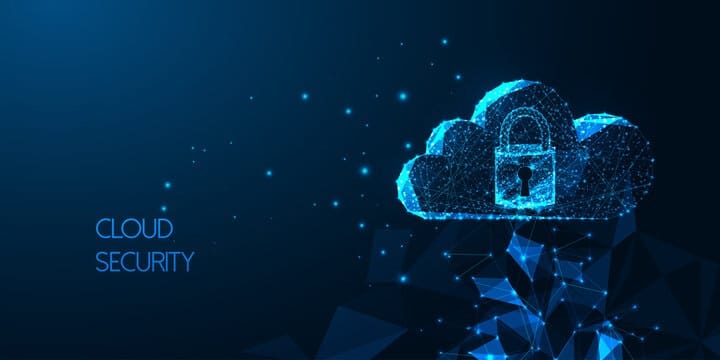A Detailed Overview of Cybersecurity Fundamentals
In an increasingly connected world, cybersecurity has become a critical aspect of protecting sensitive data, systems, and networks from malicious threats. The fundamentals of cybersecurity provide a foundation for defending against various cyber risks and ensuring the safety of digital assets. Let’s dive into the key components and best practices that form the backbone of a strong cybersecurity strategy.
1. The CIA Triad: Confidentiality, Integrity, and Availability
The core principles of cybersecurity are based on the CIA Triad, which stands for Confidentiality, Integrity, and Availability:
- Confidentiality: Ensures that sensitive information is only accessible to authorized users. This involves implementing access controls, encryption, and data classification to protect privacy. For example, businesses often use encryption to protect customer data during storage and transmission.
- Integrity: Focuses on ensuring that data remains accurate and unaltered unless modified by authorized individuals. This is crucial to prevent tampering, unauthorized changes, or corruption of critical data. Hashing algorithms, checksums, and digital signatures are common techniques used to maintain data integrity.
- Availability: Ensures that systems and data are accessible when needed by authorized users. High availability ensures that users can access data without disruption, even in the event of cyberattacks like Distributed Denial of Service (DDoS). Backup solutions, disaster recovery planning, and redundancy systems support availability.
2. Types of Cyber Threats
Understanding the various types of cyber threats is vital to creating an effective cybersecurity strategy. Some common threats include:
- Malware: Malicious software designed to damage or gain unauthorized access to systems (e.g., viruses, worms, Trojans, ransomware).
- Phishing: Fraudulent attempts to obtain sensitive information by pretending to be a trustworthy entity, often through deceptive emails or websites.
- Man-in-the-Middle (MitM) Attacks: Intercepting and altering communication between two parties without their knowledge.
- Ransomware: A type of malware that encrypts a user’s data and demands payment for its release.
- SQL Injection: A cyberattack where malicious SQL queries are used to exploit vulnerabilities in web applications and gain unauthorized access to databases.
3. Access Control and Authentication
Effective access control is a fundamental part of cybersecurity. It ensures that only authorized users can access specific resources. Key practices include:
- Authentication: The process of verifying the identity of users. This can be achieved through passwords, biometric scanning, and multi-factor authentication (MFA), which adds an extra layer of security by requiring two or more forms of verification (e.g., something you know, something you have, or something you are).
- Authorization: Once a user is authenticated, authorization defines what resources they can access and what actions they can perform. Role-based access control (RBAC) is a common method used to limit access based on the user’s role within the organization.
- Least Privilege: Users and systems are given the minimum level of access necessary to perform their job functions. This minimizes the potential damage in case of an account compromise.
4. Encryption and Data Protection
Encryption is one of the most effective ways to protect data, both in transit and at rest. It involves converting plaintext data into a scrambled form that can only be decrypted with the correct key. Key types of encryption include:
- End-to-End Encryption: Data is encrypted on the sender’s side and only decrypted on the recipient’s side, ensuring that even if the data is intercepted, it remains unreadable.
- Disk Encryption: Encrypting files stored on physical devices (e.g., hard drives, SSDs) to prevent unauthorized access to the data in case of device theft or loss.
Protecting data through encryption not only keeps sensitive information secure but also helps organizations comply with data privacy regulations like GDPR and HIPAA.
5. Firewalls and Network Security
Firewalls are one of the first lines of defense against cyber threats. They monitor and control incoming and outgoing network traffic based on predetermined security rules. Key components of network security include:
- Firewalls: Hardware or software solutions that filter traffic based on IP addresses, ports, and protocols.
- Intrusion Detection Systems (IDS): These systems monitor network traffic for signs of suspicious activity and alert administrators when a potential attack is detected.
- Virtual Private Networks (VPNs): VPNs provide secure, encrypted connections between remote users and a company’s internal network, protecting data in transit.
6. Regular System Updates and Patching
Keeping systems, software, and applications updated is a critical aspect of cybersecurity. Software vendors frequently release patches to fix vulnerabilities, and failing to apply these patches can leave systems exposed to attacks. Regular patch management ensures that all systems are up to date with the latest security fixes.
7. Incident Response and Disaster Recovery
Even with the best preventive measures in place, breaches and attacks can still occur. Having an Incident Response Plan (IRP) in place is crucial to quickly identify, contain, and mitigate any threats. This plan should include:
- Detection: Tools and systems to detect potential threats or breaches.
- Containment: Isolating affected systems to prevent the spread of the attack.
- Eradication: Removing the threat from the network.
- Recovery: Restoring affected systems and data from backups.
- Post-Incident Analysis: Evaluating the breach and implementing improvements to prevent future incidents.
Disaster Recovery (DR) plans also ensure that critical systems can be restored quickly after a cyberattack or other disaster, minimizing downtime and operational disruption.
8. Employee Training and Awareness
Human error remains one of the most significant vulnerabilities in cybersecurity. Employees need to be trained on recognizing phishing attempts, safe internet practices, and proper data handling procedures. Regular security awareness programs can reduce the risk of social engineering attacks and other human-related errors.
Conclusion
Cybersecurity is an ongoing process that requires a combination of proactive measures, continuous monitoring, and regular updates. By focusing on the fundamentals such as the CIA Triad, threat detection, encryption, access control, and employee awareness, businesses can significantly reduce their risk of cyberattacks and data breaches. As cyber threats continue to evolve, staying informed and implementing best practices is key to maintaining a strong defense against the digital dangers of the modern world.




Leave a Reply